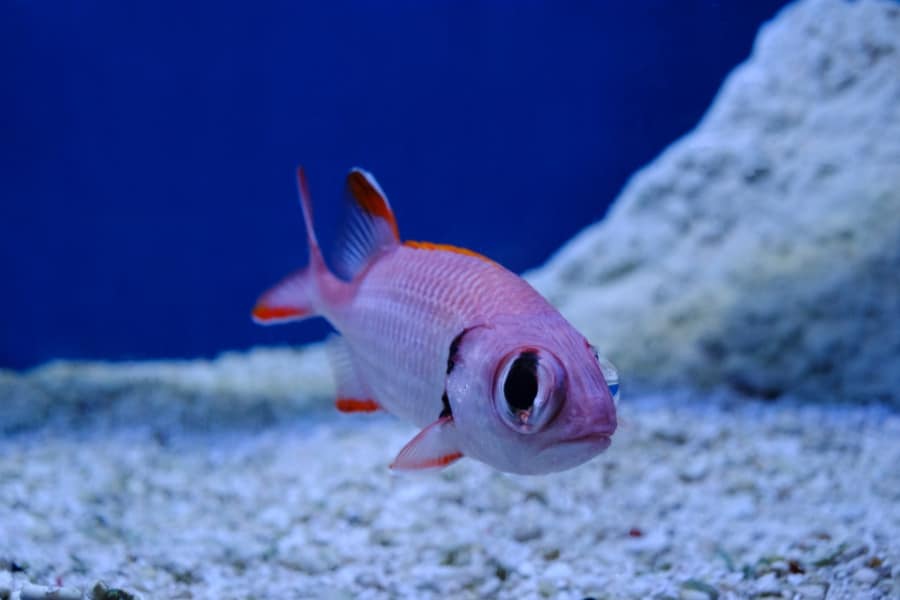Many newbie fishkeepers start to freak out when they find their pet fish still at the tank bottom. They believe there is a major issue.
If fish are regularly seen lying near the bottom of the aquarium, it is considered natural behavior. You should look into the issue if this habit is new or is followed by additional symptoms of anxiety or illness.
It is essential to understand how to identify abnormal activities and set them apart from normal activities, even if it isn’t necessarily a negative factor. There are several ways to fix any problems and restore the joy and wellness of your fish.
The long-term happiness of your fish depends on your ability to distinguish between what is problematic and what is not. Additionally, we’ll discuss warning signs to watch out for if your fish is lying near the tank base and it is something new you have noticed.
Non-Concerning Explanations of A Fish Laying at The Bottom of The Tank
There are a number of common, completely natural explanations for why fish sometimes stay on the tank bottom:
Bottom Dwellers
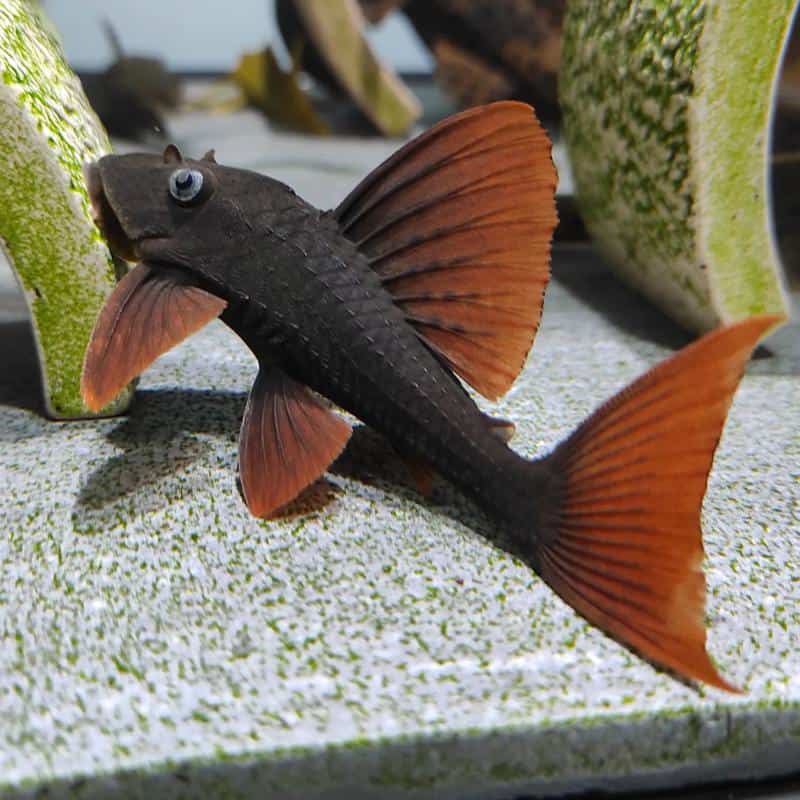
Fish that enjoy the most of their time swimming towards the tank base may be just automatically drawn there.
Coldwater fish, Otocinclus Catfish, and suckermouth catfish are excellent species of happy bottom dwellers that you’ll observe wandering at the bottom of your home tank.
Fish may choose to stay close to the bottom of a potted aquarium to enjoy the small aquatic forest if there are many low-height plants inside it.
Bottom Feeders
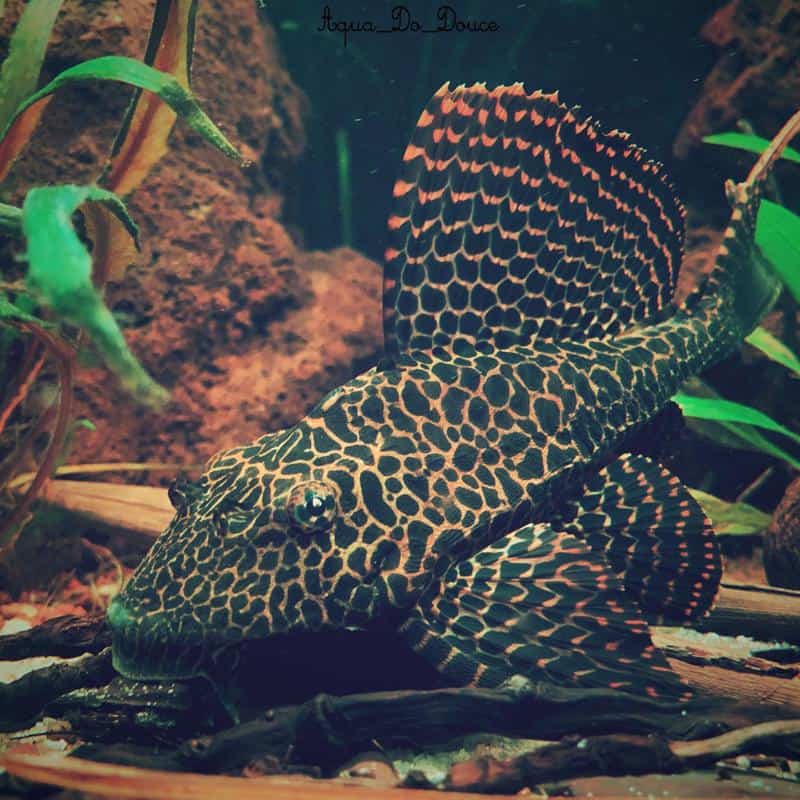
Those species that live at the bottom enjoy eating there as well. Since they eat there as well, they like to wander near the aquarium’s bottom. They may consume fish chow as it settles on the ground or dig through the stones for crumbs.
Sleeping Fish
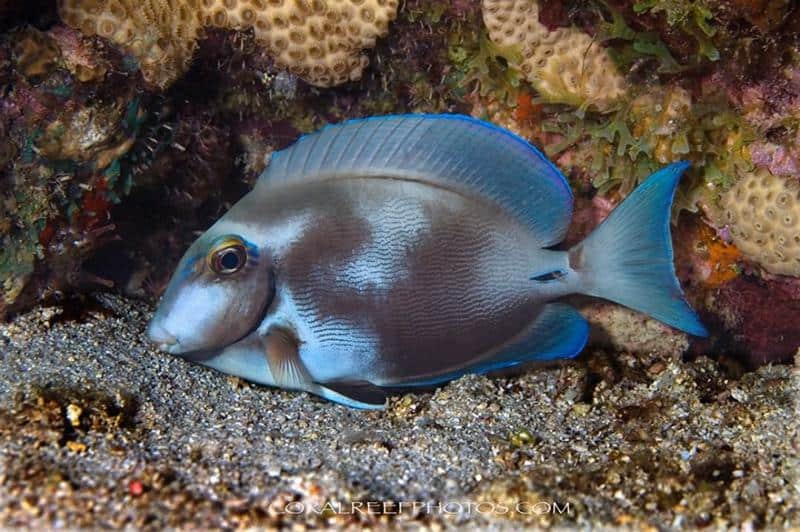
It’s totally natural for fish to nap and relax on the bottom of their tanks. Nutritionally balanced fish would repeat this during their fast and vigorous swimming sessions.
To assist your pet in sleep, you can set the brightness in your tank on an 8–10 hour cycle during the daylight hours.
Another helpful method for reducing fish anxiety is to provide them with real greenery and cave-themed décor. It might be distressing for fish to sleep at the bottom of the aquarium since they will feel unprotected and helpless.
Elder Fish
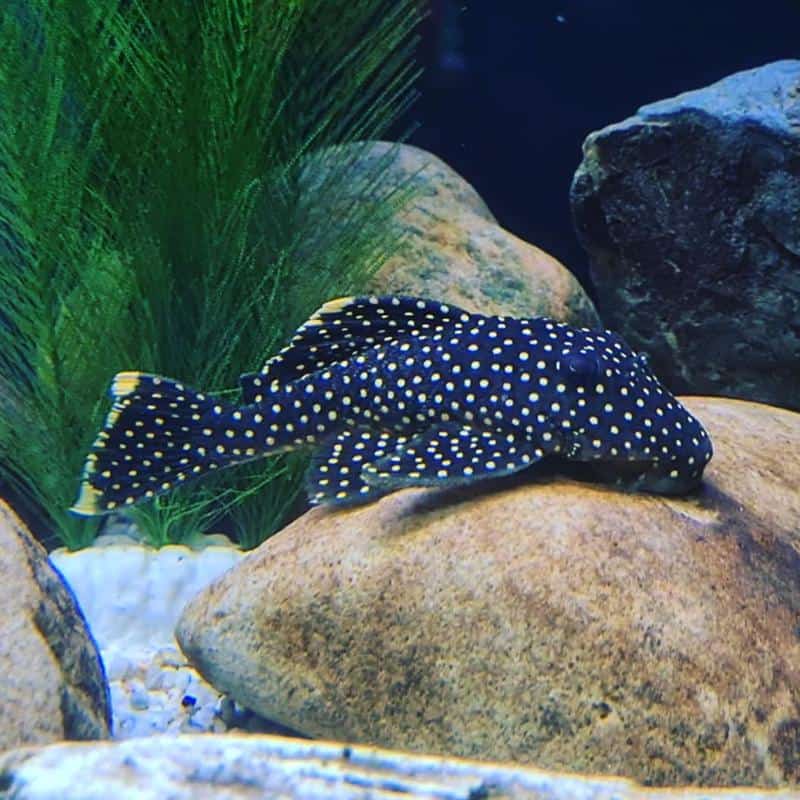
Captive tank fish have a brief life expectancy, with the most popular species living an average of only three to five years.
Your fish may start to like relaxing towards the container’s ground more often when they become older.
Quick stops or laying down shouldn’t be a problem whenever the fish stay inactive between their aggressive swimming sessions.
Newcomers
Fish will naturally search for hiding spots when they are initially introduced to an aquarium. When there are no safe places in your aquarium, new pets would go to the tank bottom to lie down.
Fishes in excellent condition would quickly overcome their anxiety and begin enjoying their new environment if they are kept with suitable tank companions. There’s no need to be concerned if this habit is only for a short period of time.
Concerning Causes of A Fish Laying at The Bottom of The Tank
There are various alarming possibilities for why a fish might lie at the tank bottom:
Hiding at The Ground Level
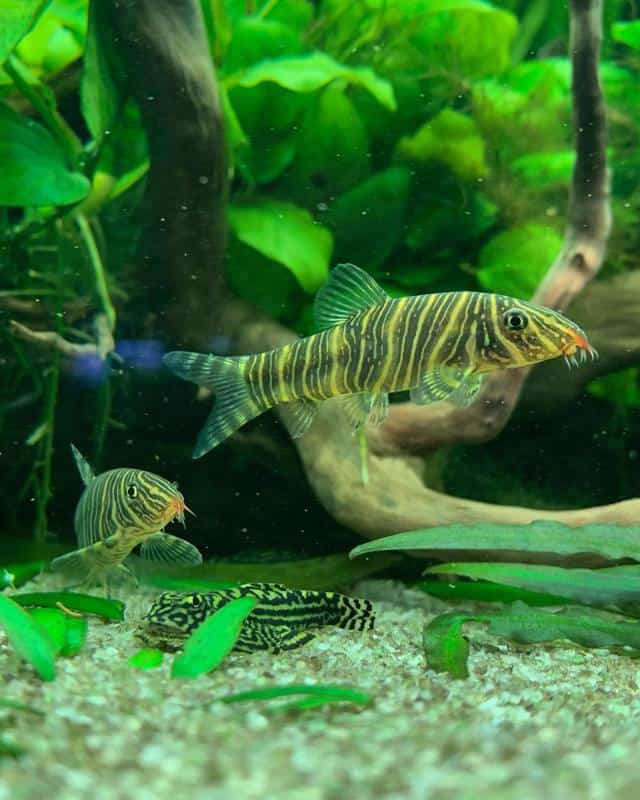
Red flags
You observe a fish tend to rest towards the tank base, despite the fact that they are usually mid-surface swimmers or bottom eaters.
Keep an eye on your pet and observe what situation arises as it attempts to move far from the ground. There could be tank companion mismatching problems if one of your fish is being bullied or getting their fins nipped by others.
It may also occur:
- If your aquarium isn’t big enough;
- The tank is overcrowded with several fish;
- You have several fish species that like to travel at a similar level.
Solutions
- Increase the number of hiding places (ornaments, real tank plants) to provide additional protection for fish in need.
- Detect and eliminate the troublemaker if the bullying goes beyond the “forceful power” stage. Aggressive tank mates can pose serious harm to their companions if they are not stopped in any way.
- To split the area within your tank, choose a mixture of ground dwellers, mid-to-top surfers, and top-level eaters.
- AqAdvisor could be used to determine whether your aquarium is overcrowded or not. Consider purchasing a larger container if it is stocked with various fish.
- Install a second aquarium for the species that are struggling at the tank base. It is the easiest and most convenient way to separate your problematic fish from the aggressive crowd.
Exhibiting Aggressive Behavior at The Ground Level
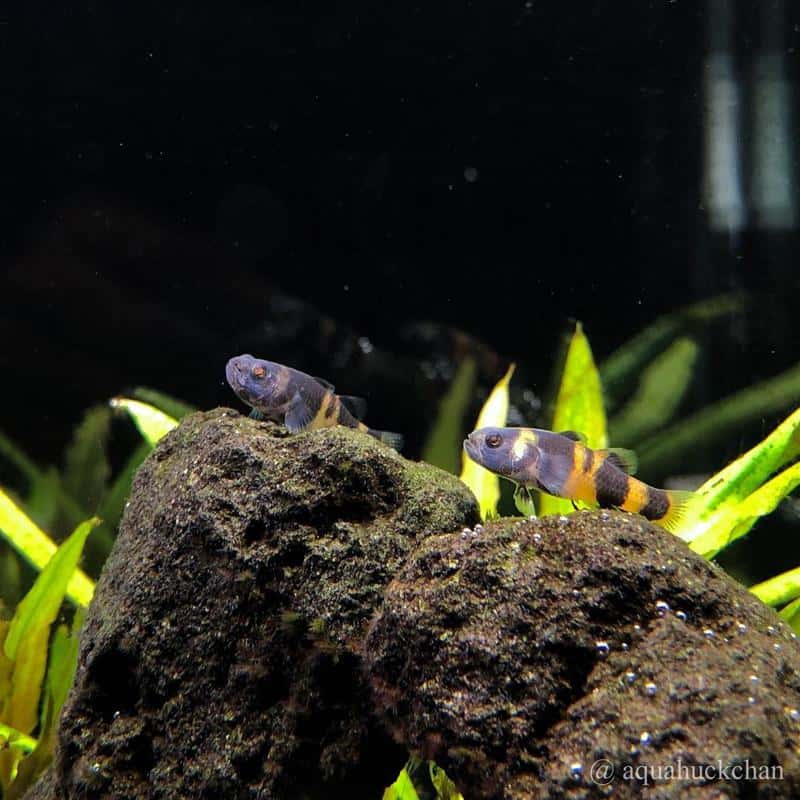
Red flags
In contrast to the situation described above, aggressive fish may lie at the ground level to establish it as their domain.
Many fish owners don’t realize how much room fish require and believe they can survive in a confined space. It’s especially true for little species such as bettas and tetras, who are typically housed in a 2-gallon aquarium!
These species can not even move freely when the aquarium is too small. Investigation and physical activity are not possible. Therefore, it makes sense that your fish would eventually lack enthusiasm in activities and simply lay at the ground level to spend their time.
Always choose a bigger aquarium over a smaller one. It is more stable and has lots of space. To make it more interesting, add accessories like rocks, plants, and decorative items to the aquarium.
Furthermore, the existence of a smaller aquarium indicates increased territorial behavior among its occupants. Often the only option left for scared and introverted fish is to peacefully remain at the ground level.
Solutions
- Ensure your aquarium layout is big enough for aggressive fish to mark up their territory inside.
- Create aesthetic boundaries between your aquarium by aquascaping. Some high decorations or real plants mostly in the middle of the aquarium will make a world of difference to keep an aggressive fish away from the bottom.
- Before adding any additional fish in the future, make sure they get along with their tank mates. A lot of hiding areas should be provided for those bottom inhabitants who are forced to split their area with aggressive fish.
Water Temperature Is Extremely Low or High
Red flags
Whenever one or several fish are found near the aquarium bottom, it is considerably more alarming if:
- The fish is having difficulty in breathing and visible irregular fin movement;
- There have been dietary changes, and your fish is occasionally consuming more which might result in problems with overeating (congestion, swim bladder, etc.);
- Whenever the water temperature within your fish container falls extremely low, your pet may remain stationary at the ground level to minimize its energy consumption.
On the other hand, when the water temperature increases to a harmful degree, fish would linger on the ground since that’s the only place where they could get the maximum oxygen. The water’s temperature must range from 24 to 27 degrees Celsius, based on the.
Your fish’s respiration could also speed up in response to an unexpected rise in water temperature. They’ll consume more food, which will result in extra debris.
An elevated water temperature combined with poor ventilation (water flow) is a horrible way to live for your pet!
Solutions
- Purchase a tank heating system featuring a control system to maintain a constant water temperature for your pet fish. Ensure that the heater’s output fits well to the power and ability of your tank setting.
- If you are raising a particular type of fish, do some homework on the ideal water temperature level you must have.
- Due to the significantly diverse water temperature requirements of freshwater fish and coldwater fish, maintain the two different species apart.
Red flags
Constantly changing water conditions are associated with bad water quality in an aquarium.
The most obvious warning signs in this scenario are abrupt fluctuations in your pet’s temperament. These fluctuations would most likely be seen in the majority of the aquarium’s occupants.
Stronger marine animals just rest down at the ground level of the aquarium as the water quality deteriorates. However, more delicate fish might be more susceptible to illness. Fish immune systems under stress could weaken and cause:
- Yeast infection;
- Bacterial infection;
- Infection from pathogens;
- Swimming abnormally can also cause wounds.
Solutions
- Do some homework on the water parameters ranges that are best for the freshwater fish you are caring for.
- Use testing equipment for aquariums to check the pH, ammonium, nitrite, and sulfate concentrations.
- Instead of trying to get the ideal reading on testing equipment, try to maintain a steady level for water properties like pH, liquid hardness, and salt content.
- Fish seem to be more vulnerable to risk and anxiety from water alterations than they are from pH levels that are below the optimal range.
Even for experienced aquarists, it might occasionally be too difficult to handle the water parameters accurately.
Isolate your pet if they aren’t only flopping around at the base of the aquarium but are also exhibiting other alarming signs. It’s possible that a virus is running loose within your aquarium if every fish is displaying evident indications of suffering.
Related: High Aquarium pH: Causes, Symptoms, & Cures
Diseases that Encourage the Fish to Stick to The Tank’s Bottom
Stressful tank circumstances (such as abnormal water settings, low water purity, etc.) could cause an epidemic of illness in a freshwater fish tank. Always isolate sick species in a “medical tank” while keeping an eye on their health. You can provide medication to the affected fish more easily if you have an isolation tank.
Discover the signs of some of the prevalent illnesses that might lead your fish to wander in the aquarium base. Identifying this early warning symptom will enable you in treating a condition during a more controllable phase.
Ammonia Toxicity
Ammonia toxicity is among the most serious situations, and it could be ignored by most fishkeepers when their pet is sitting at the aquarium’s bottom.
The tank’s water must be tested to find out how much ammonia and nitrite are present. Ammonia poisoning seems to be quite suspected to be the cause of abrupt behavioral changes in many fish.
Other signs of ammonia toxicity involve:
- Appetite reduction;
- Difficulty in breathing;
- Fish congregate in parts of the aquarium where the oxygen content is higher (such as on the ground or next to the water filter’s outlet).
Causes
- Overpopulation;
- Overeating;
- Overstocking an aquarium with fishes without introducing a bacterial starter;
- Rinsing an aquarium thoroughly without upsetting its existing population of beneficial microorganisms.
Treatment
- To find out how much ammonium is in your aquarium using specialized test equipment. Any measurement above zero should be a cause for concern because there is no such thing as a safe ammonia concentration.
- To reduce the ammonium content rapidly, conduct a 25–50% water replacement. Use anti-chlorinated water or filtered water that has been resting for a minimum of 48 hours.
- As soon as the biological equilibrium begins, offer food to your fish only that is absolutely necessary.
- If you’re starting from scratch, you should clean up your tank.
- Periodic ammonia levels should be tracked.
Swim Bladder Disease
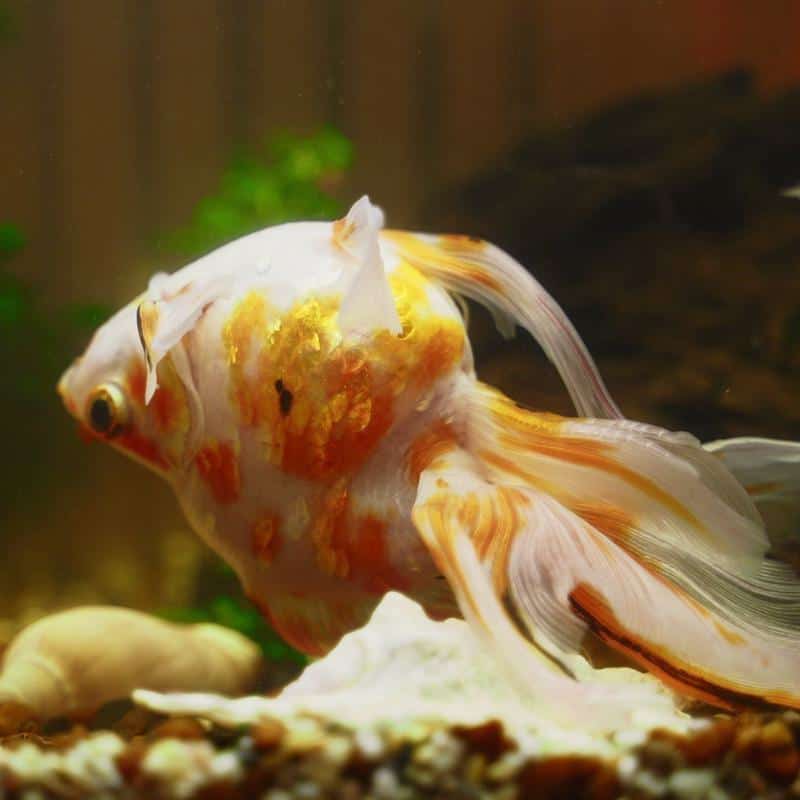
A swim bladder disease may be the cause of your pet’s behavior, especially if it is followed by a lack of equilibrium balance. The fish’s swimming bladder, if functioning properly, enables them to move and hover on all tank levels.
Fish with swim bladder infections would float on the top level or are found at the bottom of the aquarium. The sick fish will also have difficulty floating upside down.
Causes
- Extremely poor water quality;
- Consuming excessive food;
- Incontinence;
- A swim bladder infection could occur as a result of another microbial illness.
- It occurs as a result of renal problems, affected embryos in females, and other factors.
Treatment
- Examine the water’s properties and investigate the underlying reasons for bad water conditions.
- Wait for 24 to 48 hours before serving food to your fish again. The majority of fish can survive for a short time without food.
- Increase the fiber intake in your pet food if incontinence is the cause of the swim bladder disease.
- Provide your pet an aquatic salt solution bath (1 Tbsp salt to 3 liters of water) if you think they have a microbial infestation.
- Employ a fish food-binding antibiotic treatment to address the swim bladder disease effectively. The most effective method for curing your pet is to address the disease from the inside because that can not be treated by making changes to the aquarium settings.
White Spot Condition
White spot disease, often referred to as ich, is a condition carried on by papillary organisms (Ichthyophthirius multifiliis).
The condition appears as white patches on tank species and could lead your pet to:
- Rest at the aquarium bottom;
- Scrape across the tank’s substrate as well as other sharp corners;
- Show clear symptoms of discomfort (reduced hunger, aggressive swimming, etc.).
Causes
- A poor immune response;
- Water temperature that is too warm for fish to tolerate;
- Bad nutrition;
- Stress brought on by being housed with species that aren’t a good fit;
- Incorrect relocation (from a shop to a house or while relocating in a different container);
- Almost any stressful event weakens the fish’s defenses sufficiently.
Treatment
The pathogen could be eliminated by increasing the water temperature within the aquarium if you’ve discovered the disease in its initial stages. Maintain a temperature of 78-80°F till the problem is addressed. Naturally, avoid doing this when raising coldwater species.
Prescribe drugs to the infected fish in an isolated aquarium for 10-14 days with the help of formalin, molybdate green, metal salts, or bromothymol blue. You may also give your pet a potassium permanganate treatment.
Learn the safest way to bathe fish with potassium permanganate through this video:
Visible Injuries Due to High Water Flow
Powerful currents are preferred by fish such as danios, golden barbs, yoyo puffer, and rainbowfish. However, species such as bettas prefer to stay in low water currents.
High currents could be extremely exhausting for species that fall into the second group. And besides, moving against a powerful stream consistently requires a lot of strength. Therefore, they sometimes lie near the aquarium’s bottom to get a relaxing break.
A sponge separator can be attached to the filtration system to reduce the high flow of water. Additionally, you may divert the flow toward plantings and decorations. The flow across the aquarium could be significantly reduced by interrupting the flow.
Causes
- Fin nipper species;
- Run into attackers;
- Conflicts over territory, mating privileges, or power;
- Stumbling onto objects with jagged or pointy corners;
- Being tossed around by a powerful filtration system with a great amount of flow.
Treatment
- Examine the origins of the initial injuries and their relevant circumstances.
- Consider a filtration system with a reduced flow rate or one that can be adjusted.
- Cut off any communication between aggressive fish, trouble makers, or fins nippers away from the injured fish.
- Smooth off any harsh edges on your decorations.
- Keep the injured fish in isolation that is laying at the aquarium’s base.
- Use an antibiotic treatment, such as MelaFix, to heal the lesions and stop germs from spreading.
Also Read:
- Why Do My Fish Keep Dying?
- Betta Fish Laying on Bottom of Tank
- Common Guppy Diseases
- Why Is My Fish Swimming in Circles?
- How to Save Dying Fish After Water Change
- Can Fish Drown?
FAQs
Why Is My Fish Having Difficulty Breathing at The Bottom of The Tank?
You must help as soon as you can if your Betta fish is struggling to breathe and is lying at the base of the aquarium. It can be heat exhaustion, nitric toxicity, or ammonium overdose.
Why Is My Fish Sitting Still at The Tank’s Bottom?
You have to investigate more carefully to figure out what’s happening if your pet fish is still.
Examine their gills to check whether the fish is breathing properly! If that’s the case, they’re most likely asleep. Since bettas are unable to shut down their eyes, it will seem like they are still active.
It’s possible that your pet has swim bladder illness or is experiencing heat shock when it’s trying to wiggle its gills. In that case, increase or decrease the temperature as necessary but gradually.
Conclusion
Keep an eye on your pet fish when they are lying near the base of the aquarium if it is the first time you have noticed this. Now you understand the alarming red flags related to this unusual behavior.
There’s no need to be concerned if your tank species are happy wandering at the ground level of the aquarium. If you have room in your layout, think about including some extra decorations or real plants. It would allow your pet to relax in the hidden spots without any stress or threat.
It will ensure that your pet is safe, comfortable, and energetic without being in active mode throughout the day.
